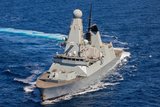Budget restrictions, need for mature technology driving Lithuanian naval plans
As maintenance challenges and financial limitations remain at the forefront of the Lithuanian Navy’s current operations, a 2030 fleet plan envisages a class of six or more 60-80m surface vessels to replace existing assets.
Presently, the Lithuanian Navy operates a mixed surface fleet of around eight patrol and MCM vessels, together with one support ship. Hampered by the age of its surface fleet, some of which are approaching 60 years old, officials are looking to multipurpose platforms as replacements.
At the Underwater Defence and Security Conference in Portsmouth, Cmdr Tomas Skurdenis, commander Lithuanian Naval Flotilla, said that the new patrol
Already have an account? Log in
Want to keep reading this article?
More from Naval Warfare
-
![Sweden’s decision on four new warships inches closer as it eyes UK, France and Spain]()
Sweden’s decision on four new warships inches closer as it eyes UK, France and Spain
Sweden decided last year that it wanted a significantly larger warship for its Luleå Class programme than originally planned, with three likely contenders that could potentially deliver within the country’s tight schedule.
-
![How the use of artificial intelligence will affect the US Coast Guard’s acquisitions]()
How the use of artificial intelligence will affect the US Coast Guard’s acquisitions
The USCG is pursuing AI tools to improve the way the service conducts its procurement and fielding processes.
-
![US Coast Guard pursues solutions to increase maritime domain dominance]()
US Coast Guard pursues solutions to increase maritime domain dominance
The USCG is seeking technologies, services and applications to better connect its assets and speed up the decision-making process.
-
![Canadian Coast Guard’s OOSV delivery is “major milestone” in fleet modernisation]()
Canadian Coast Guard’s OOSV delivery is “major milestone” in fleet modernisation
The Polar Class 6 platform is the largest CCG science-dedicated vessel and will operate on the country’s east coast.






















